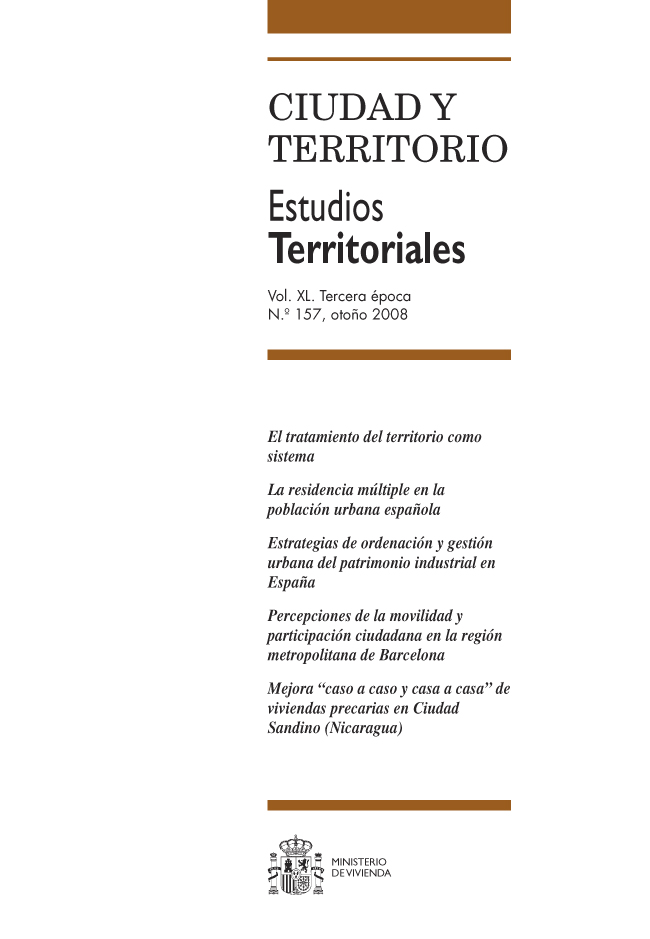Multiple Residence and the Spanish Urban Population: A Social and Demogarphic Approach to Second Home Property Owning
Keywords:
Tipos de vivienda, población urbana, ciudades grandes, EspañaAbstract
The article is based on the latest contributions to the question culled from international and national works
on the multi-residence phenomenon. The approach here used argues for an analysis of the interactions
between the characteristics of any household’s principal residence and its second. To this end the social and
demographic factors that favor multi-residence in Spain’s major cities are gone into. Further to this, the
differences as between cities are given their due. The fi ndings show that: a) the inhabitants of Spain’s major
cities are more likely to have a second home; b) the differences in the diffusion of multi-residence as between
cities are best explained by the degree of regional development; c) the higher the global second home index
of any city reads then the lower the social divergence in second-home possession will stand; and d) a highly
dense urban model will boost the demand for second-homes.
Downloads
Downloads
Published
How to Cite
Issue
Section
License
Copyright (c) 2008 Julián López Colás, Juan Antonio Módenes Cabrerizo, Brenda Yépez Martínez

This work is licensed under a Creative Commons Attribution-NonCommercial-NoDerivatives 4.0 International License.
Considering the provisions of the current legislation on Intellectual Property, and in accordance with them, all authors publishing in CyTET give -in a non-exclusive way and without time limit- to the Ministry of Transport, Mobility and Urban Agenda the rights to disseminate, reproduce, communicate and distribute in any current or future format, on paper or electronic, the original or derived version of their work under a Creative Commons Attribution-NonCommercial-NoDerivative 4.0 license International (CC BY-NC-ND 4.0), as well as to include or assign to third parties the inclusion of its content in national and international indexes, repositories and databases, with reference and recognition in any case of its authorship.
In addition, when sending the work, the author(s) declares that it is an original work in which the sources that have been used are recognized, committing to respect the scientific evidence, to no longer modify the original data and to verify or refute its hypothesis. Author(s) also declare that the essential content of the work has not been previously published nor will it be published in any other publication while it is under evaluation by CyTET; and that it has not been simultaneously sent to another journal.
Authors must sign a Transfer of Rights Form, which will be sent to them from the CyTET Secretariat once the article is accepted for publication.
With the aim of promoting the dissemination of knowledge, CyTET joins the Open Journal Access (OA) movement and delivers all of its content to various national and international indexes, repositories and databases under this protocol; therefore, the submission of a work to be published in the journal presupposes the explicit acceptance by the author of this distribution method.
Authors are encouraged to reproduce and host their work published in CyTET in institutional repositories, web pages, etc. with the intention of contributing to the improvement of the transfer of knowledge and the citation of said works.








 Enlace a CyTET en Linkedin
Enlace a CyTET en Linkedin